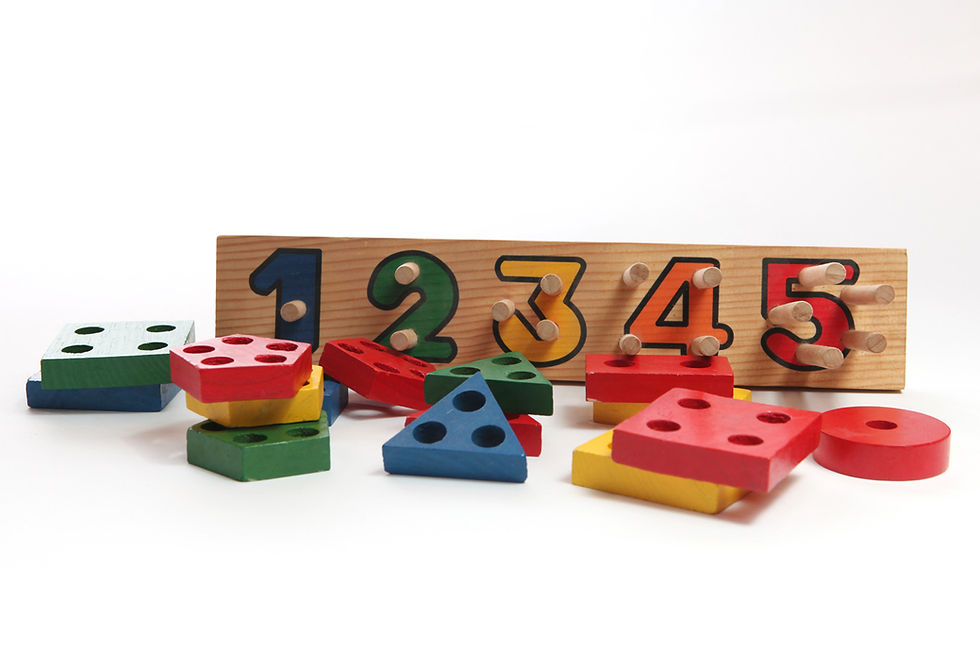10 Steps to get Your Child Ready for Kindergarten
- Elle
- Apr 2, 2017
- 3 min read

Hello, friends! One of the questions that I get asked most often is "What can I do to prepare my child for Kindergarten?" As parents, you want to do everything you can to make sure your little one is ready for their first year of school. Kindergarten has come a long way since we were in school. By the end of the year, your child will be reading, writing, adding and subtracting. Can you believe it?
As a former Kindergarten teacher (I now teach 2nd grade), I can tell you that the more your child comes into the classroom knowing, the easier the transition into academia will be. Below is a list of skills that will greatly benefit your child to help them be a successful Kindergartner.

1. Ability to read & write their name- On the very first day of school your child will be expected to write their name on papers and will need to be able to read their name in order to find their cubby and assigned seat.
2. Letter names and sounds- If your child already knows their letters and the corresponding sounds, they will be at a huge advantage! Students who already know these skills will be able to read and write much quicker than students who need to be taught this skill.

3. Counting and number recognition- Your child should be able to count to at least 10 and recognize numbers 0-10. By the end of Kindergarten, they'll be counting from 0-100, counting by 5's and counting by 10's!
4. Counting with one-to-one correspondence- Sure, your child may be able to count from 0-10 but can they count out objects? Try laying objects out on a flat surface and have your child count them for you. This skill will be a huge asset for them as they learn to count, add and subtract!
5. Reading basic words- While this skill isn't completely necessary, it will be very helpful to your child. Students will begin "reading" very early on into the school year. Teachers typically teach this skill by introducing a couple of new words each week for the students to learn to read and spell. Traditionally the first words are: I, see, a, my, can, the, me
6. Blending sounds- Your child will learn to blend sounds together to form words. You can teach your child how to do this by stretching a word out (saying the sounds slowly) and having them put the word back together (or guess what you are saying). For instance: c-a-t = cat. You could even make a game out of it! This will skill is essential to reading.
7. Rhyming- There are countless YouTube Videos, online games, and activities to help teach your child how to rhyme words. Try having your student touch their nose every time they hear a rhyming word in a story you read to them.
8. Stamina- In class, we do something called "Independent Reading". During this time, students quietly explore books on their reading level. At first, they'll simply look at the pictures quietly but by the end of the year, your child will be actually reading a book all by themselves! Try having your child "read" quietly for 5 minutes at a time. This will help build their stamina so that they'll be able to quietly enjoy a book for longer periods of time.
9. Comprehension- One skill your child will need to learn is to listen to a story with a purpose. In school, they'll have to answer a series of questions about the stories that they hear. They'll even have to give a summary, identify the problem and solution and retell stories. Ask your child questions after each story you read to them. Who were the main characters? Where did the story take place? What happened in the story? What was the problem? How was the problem solved?

10. Cutting- You will be surprised by how many students enter the classroom without ever handling scissors! In Kindergarten you child will be cutting... a lot. Don't be afraid to let your child handle scissors at home. Did you know Play-Doh makes super safe scissors for children to use to cut Play-Doh? This might be an excellent starting point for your child! Many manufacturers also sell scissors that are safe for young children. Have your child cut basic shapes out of a piece of paper. Once they get the hang of it, you can have them practice curvy lines.
There you have it! A list of 10 skills that you can work on with your child to help them be more successful in Kindergarten!




Comments